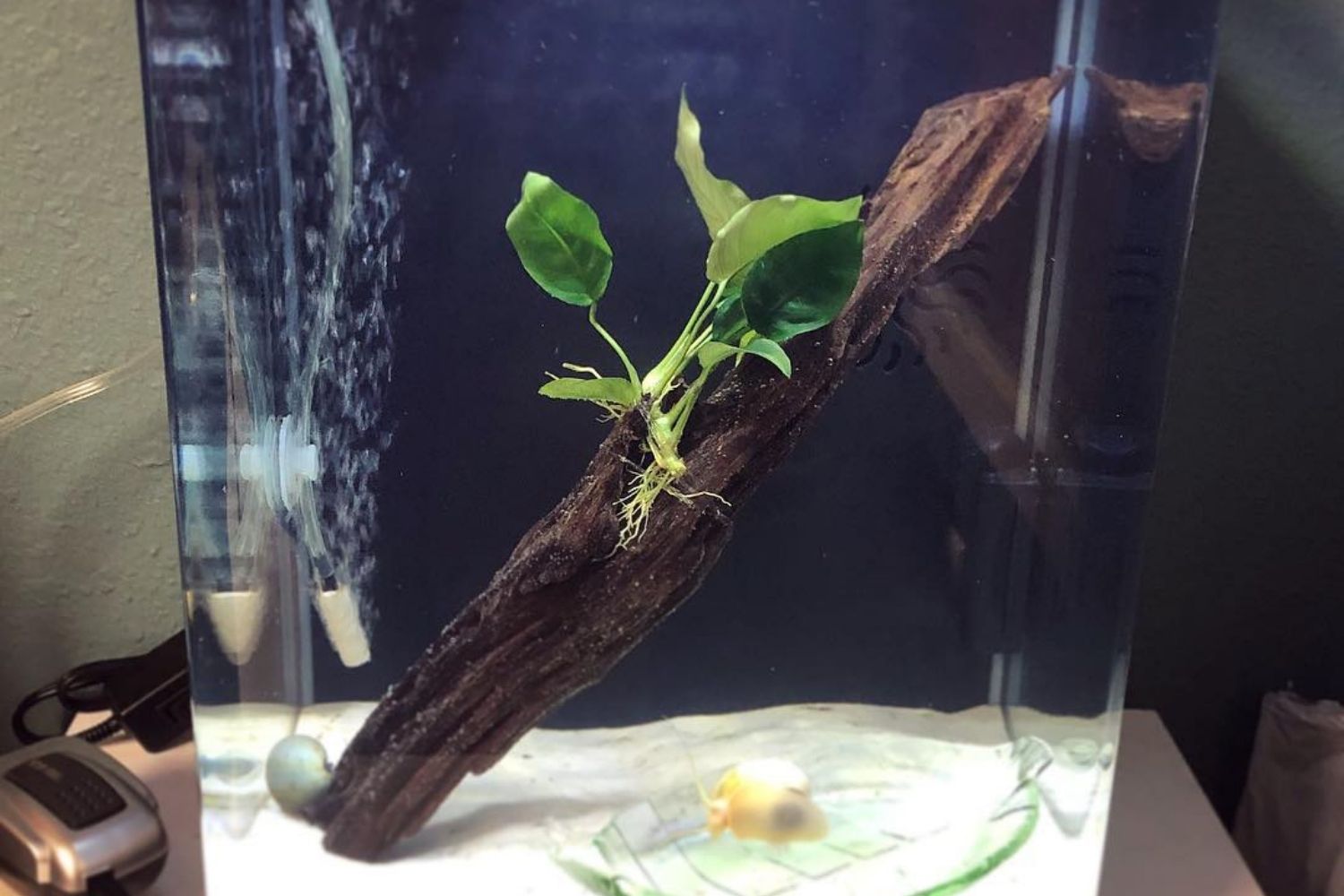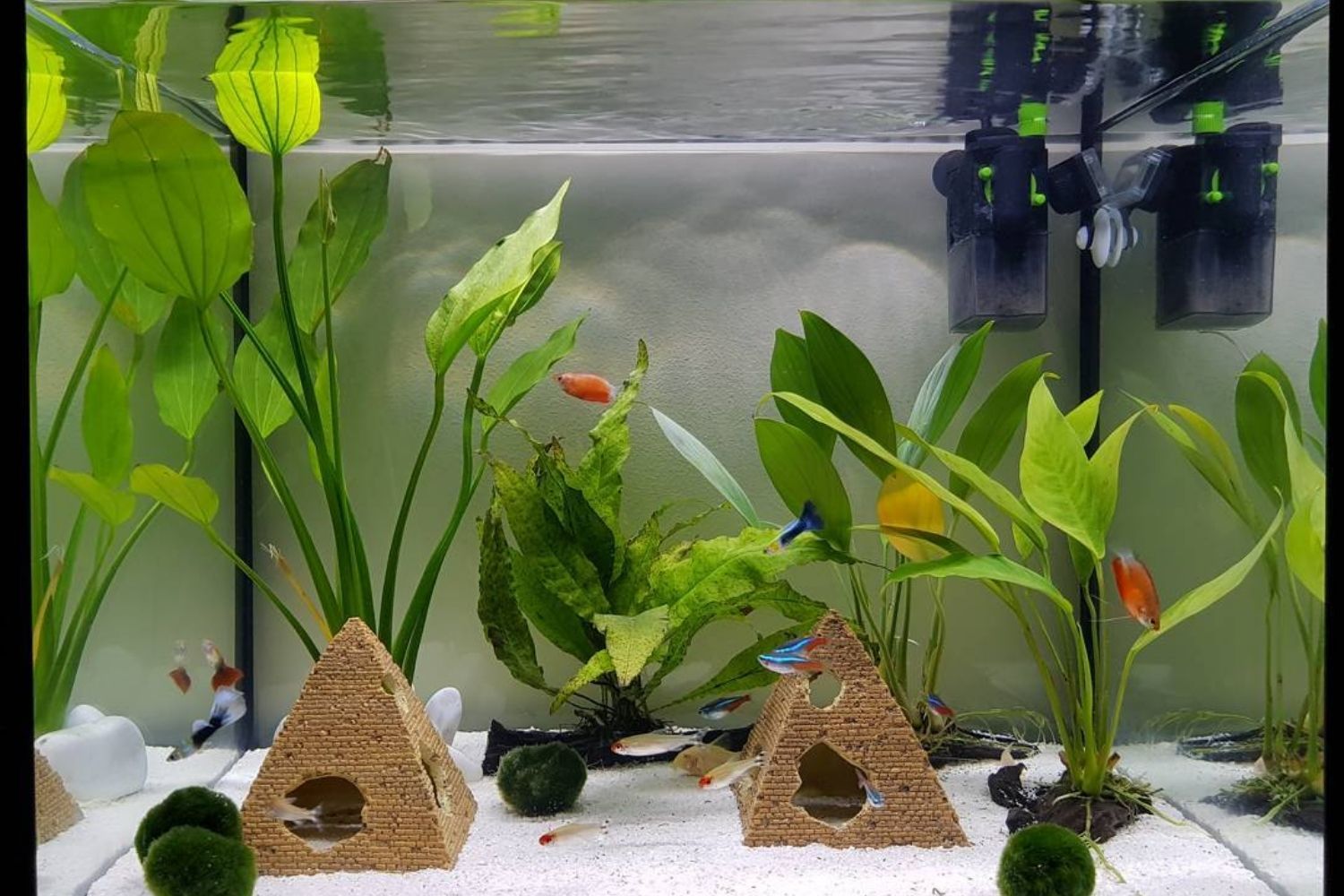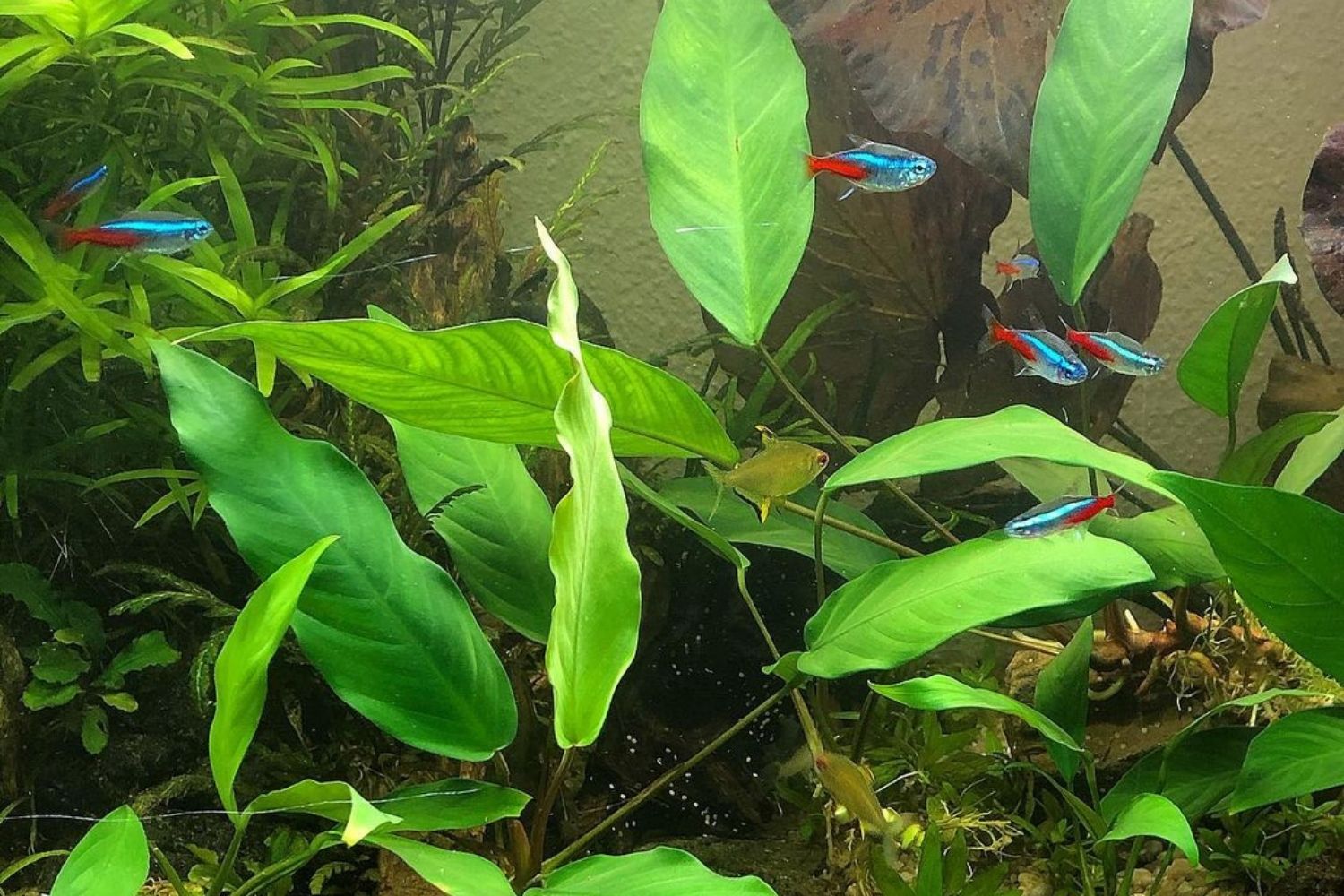Anubias Congensis is one of the easiest plants to take care of and the perfect choice for beginners and also for hobbyists. We have made a lot of research about this plant, and we have a lot of experience with other similar plants.
Our tips and care guide will help you maintain and grow this plant in the best conditions in the easiest ways. Our article contains all the details about how to maintain and grow this freshwater plant. It is a very beautiful plant, and the chance of being harmed by its tank mates is very low because they dislike the hardness of the leaves and they ignore it.
Overview
This wonderful plant is a very unique variety of Anubis freshwater plants. It has a long slender leaf shape with a very attractive deep green color. Hardy and very attractive for any freshwater aquarium. Its botanical name is Anubias Congensis, and it grows slowly, the maximum size that it grows up to is 16 inches, and its hardness varies from 0-21 degrees dKH.
This plant adapts easily to new environments. Meanwhile, the plant matures, its leaf color changes to a dark vibrant green, and it gives an attractive look to your aquarium. It is very easy to decorate with another kind of plant and is mostly settled foreground or midground.
| Care difficulty | Easy |
| Lightning | Low to medium |
| Temperature | 71 – 82°F (22-28°C) |
| Optimal pH | 6.0-8.0 |
| Optimal GH | 2-15 |
| Growth rate | Slow |
| Substrate | Not needed |
| Placement in tank | Mostly foreground or midground, rare background. |
| Height | 20-100 Inch (50 to 100 cm), depends on the type |
| CO2 | Not needed – low |
| Propagation | Cutting the rhizome |
Origin & Benefits of Anubias Congensis
Anubias Congensis is a native plant to tropical Western Africa, a beautiful genus of semi-aquatic and aquatic flowering plants, which is part of the Araceae family. The genus name comes from the name of the Egyptian god of the afterlife, which was Anubis.

Anubias Congensis on its natural habitat. Freshwaters of Western Africa.
Anubias Congensis, except for the fact that it is a beautiful plant, also has a lot of other benefits. Having this plant in your aquarium can give it natural filtration, but you will still need to install a filter system. It also helps to provide beneficial bacteria, and it gives more aesthetically pleasing aeration to the fish tanks.
Same as plants do on land, the Anubias plant provides oxygen but, in this case, in the water while absorbing carbon dioxide. To have an overall healthy life and to breathe easier, fish needs this oxygen in the water. Having a good plant-like Anubis, you will be able to avoid dealing with algae growth repeatedly.
Plants will balance the ecosystem of your aquarium, which will prevent the algae from growing as freely. This plant will be an amazing place for fish to hide among the leaves and also graze on some of the algae that grow on them.
Other Anubias Types
Anubias is the genus of semi-aquatic and aquatic flowering plants, a very beautiful plant that ends easy to take care of. It has a lot of varieties, and each variety has its own unique and beautiful appearance, but we will discuss only some of them.
Anubias Gigantea
Starting from its name, we notice that this plant is a very large variety. This plant’s growth rate is also slow like the other ones, and it requires medium lighting to thrive and grow successfully. It is best suited to the background of the aquarium tank because of its tall height, which is more than 1 meter (40 inches).
Anubias Frazeri
This type of Anubias plant is a hybrid. It is grown from a combination of species such as Anubis Congensis and Anubias Barteri. This plant can be best suited for midground placement and thrives under moderate and low lighting conditions. Its growth is slow and steady, and it has deep green pointed leaves.
Anubias Afzelii
Anubias Afzelii is a hardy and very easy plant to take care of. Like the other Anubias types, it is also known to tolerate a wide range of water parameters. They are very slow growers, which means that your aquarium won’t be filled out quickly. Also, the slow growth means that they are a perfect home for algal colonies if they are in bright lighting. In this case, if you place them in the shade of other plants is usually an ideal situation.
Anubias Gracilis
Some varieties of Anubias have triangular leaf structures, and Gracilis is one of them. This variety of this wonderful plant grows up to 8- 12 Inches (20-30 cm) in height and is best suited at the midground or background of the tank. Like the other varieties, Gracilis grows slowly and will be great with low-moderate lightning.
How to Plant
It is often recommended to tie the Anubis next to rocks or driftwoods, and this method is highly successful because even if the plant is tied to the rock, the roots still go down looking for the substrate. But the best way to do it is to plant it in the substrate but not bury the rhizome because of the part where the leaves are going to come out.
If you have a good substrate, it will be very good for the plant, but if you put root tabs around, the plant will grow even better, and the roots will be a lot nicer. Also, it will get nutrients much faster.
When planting Anubias Congensis, you should make sure that the roots are plugged into the substrate. To keep this plant stuck to the substrate, a great tip is to glue it. Depending on the planting method, you can either glue it directly into the substrate, rock, or driftwood. Another method is to tie it with threads. The thread will keep it attached and allow it to thrive.

Plant Anubias Congensis into a wood or a rock.
Care Guide and Tank Requirement`
Anubias Congensis is an extremely easy plant to take care of. This plant usually thrives in low-nutrient waters and in near darkness. As long as you take care of the algae, you will have to do very little to take care of this plant, even though Anubias can help you with the algae.
You have to make sure the plant remains in the water, at least 12 inches (30 cm) deep at all times, and if you want, you can dose it sometimes with nutrient-rich fertilizers or maybe with some liquid CO2 supplement. It is important also to remove the dead leaves as they crop up and also do the occasional trim.
When choosing a tank size for Anubias Congensis, remember that this plant’s minimum water depth is 12 inches (30 cm). Usually, aquariums can be deeper than this, but if you are thinking of adding it to a frog tank, first calculate aquarium depth as they tend to be smaller.

Planting Anubias Congensis is easy. Simply attach it to a rock or wood.
Water Parameters
Anubias Congensis is a very chill plant when it comes to water parameters. Their best is a neutral pH zone of 7.0, but they are able to grow in almost any pH parameter. Also, this plant can do its best in warmer water but not too crazy hot because also your fish won’t be doing well either, and also it needs to be over 68 degrees F (20°C).
Their appropriate temperature can be between 72 and 78 degrees Fahrenheit (22 – 25 °C). It is important not to make drastic changes to the aquarium because unstable parameters will result in melting and the rotting of the aquatic plant.

Having Anubias Congensis, Afzelii and Lanceolata in one tank creates a beautiful design.
Lighting & CO2
If you want your plant to have proper growth and survival of it, lightning is another important requirement. Since Anubias Congensis has a slow growth rate, it has been observed that the intense lightning makes them grow faster, sometimes at the same rate of algae formation.
All types of Anubias need different lightning conditions, some low, others medium. It is recommended to use moderate-low lighting conditions, this way, the plant will be more healthy, and it won’t be harmed.
A CO2 system is not necessary, but if you add it, this can promote faster, better, and healthy growth and more robust leaves.
Other Supplements
Anubias Congensis is a plant that doesn’t require too much time and effort, it can grow successfully with and without fertilization. Even though some hobbyists argue that if this plant won’t show signs of deficiency it means that it doesn’t need fertilizer application.

Supplements we use for Anubias Congensis.
As we know that most of plants respond positively to fertilizer application and CO2 supplementation, you can use a trusted brand of fertilizers if you want Anubias to get this result. To prevent the appearance of yellow spots on the leaves of your Anubias, you should use a liquid fertilizer that consists of iron and manganese.
Propagation
Anubias Congensis is very easy to propagate the plant. You can divide it through rhizome division. When you want to cut a part of it you should use very sharp and sterilized scissors, and the location of the cut should be above the substrate. You can use the cuttings because they can be grown fully or partially submerged in terrariums or paludarium.

Anubias Congensis 2 days after we plant it.
Tank Mates & Design Ideas
Anubias Congensis is considered one of the best plants for the dwarf shrimp tank, but it is also compatible with tank inhabitants like snails and other fish. Because this plant has coarse and leather-like leaves, it is very difficult for the fish to consume or damage it, even for large fish and other herbivorous fish species. You can also use this plant in tanks with:
- Goldfish like Black Moor Goldfish
- Tetras
- Variety of snails as Nerite snails, Mystery snails, Ramshorn snails, and Japanese trapdoor snails
- etc

Shrimps loves to swim on Anubias Congensis leaves
As for decoration, you can also use some other aquarium plants that are appropriate to be in the same aquarium as Anubias. Plants that would be a great design with Anubias Congensis are Java Moss, Christmas Moss, Bacopa Caroliniana, etc.
Conclusion: Is Anubias Congensis Suitable for Your Tank?
The Anubias Cogensis plant would be the perfect choice for your freshwater aquarium. Even if you are a beginner, it will be the perfect plant for you as it doesn’t need too much attention to take care of, and it can be grown in low-light tanks.
You have to make sure to obtain healthy potted species, and that’s it. I am sure that everyone that has this wonderful plant in their aquarium loves it, even for the appearance but also for the minimal care requirements.









